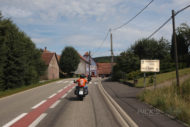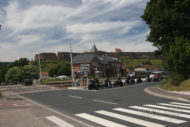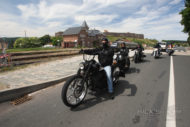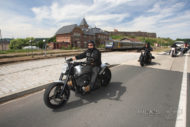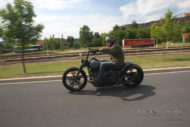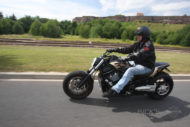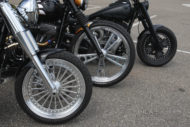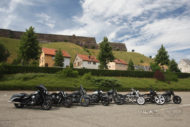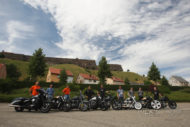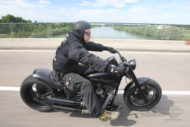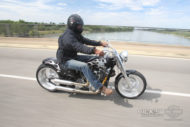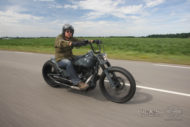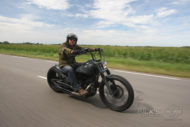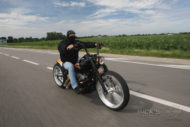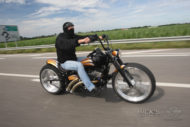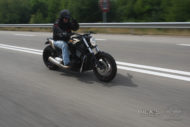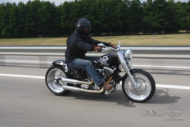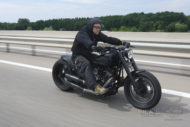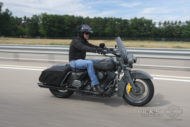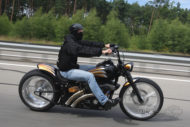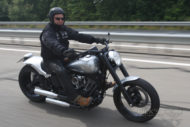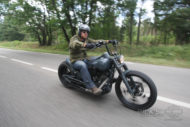A bike tour through the Alsace…
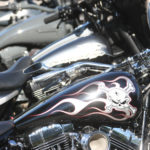
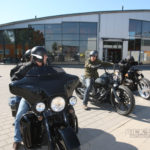
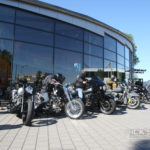
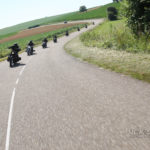
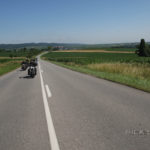
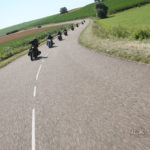
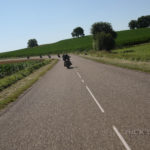
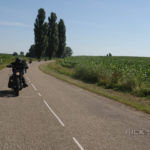
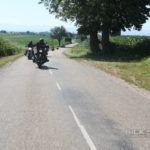
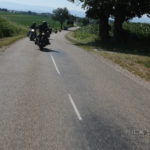
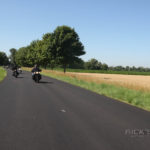
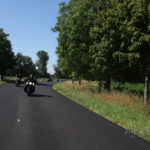
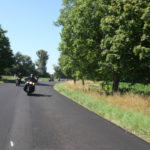
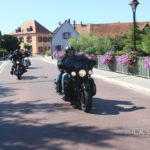
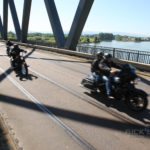
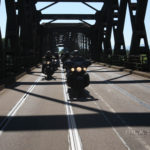
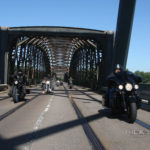
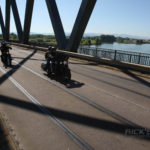
Wide tire conversions, completely new builds and the entire Rick’s wheels program have become part of the European custom scene during the last few years. And for the Harley-Davidson V-Rod models, there can hardly be anyone else who has more unusual parts in the program than Rick’s.
Every Rick’s conversion and build is thoroughly checked by the team and then test-ridden, so why not combine a test ride with some photo shooting? About 10 km from the “House of Custom” the old railway bridge leads over the river Rhine and into the Alsace where even at the weekend empty country roads and picturesque villages with half-timbered houses beckon.
The first part of the route leads via these minor roads to Wissembourg, but if you want a detour into more recent German-French history, then take the route via Hatten where a lonely museum on the Maginot Line marks the place where in January 1945 the last German offensive in the West ended in a tank battle between US troops and the SS. Operation “Northwind” was the last battle in this area that saw many acts of war, but we will return to this subject many times during the tour.
After less than 30 km we arrive at Weissenburg/Wissembourg, and from the nearby Gaisberg – a battlefield with many memorial stones from the German-French war of 1870/1 – there is an excellent view of the “Pfälzer Wald”, the Rhine valley and even the Black Forest, and in nice weather this offers a unique panorama which only insiders will appreciate and is a good opportunity to take photos of the bikes and the riders.
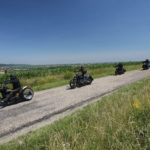
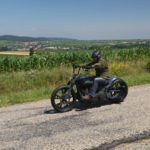
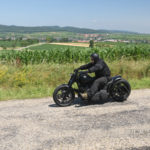
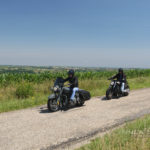
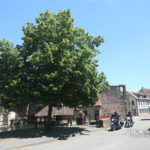
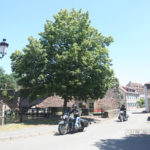
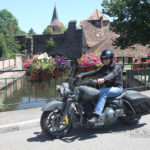
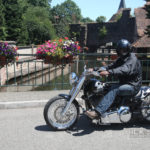
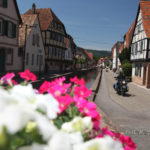
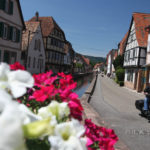
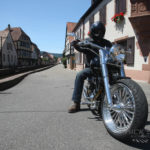
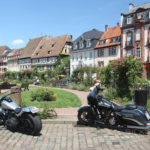
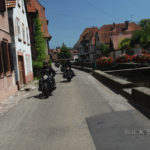
“Kevin 23” was built for the son of the Kiesling family of the SKS transportation company and given to Kiesling junior at the 2007 Custombike show. This weekend the bike is at the “House of Custom” for necessary maintenance and also taking part in the test ride-out. The “Race Rod” is from 2008 and shows what can be created by Rick’s team with their parts…an ideal bike for the bendy roads of the northern Alsace!
The third bike is a completely new Softail conversion in typical Rick’s style: elegant, compact, clean and simply perfect with a 240 Metzeler tire at the rear and a V-Rod headlight at the front.
On 4th August 1870 one would have had a perfect view of the first large battle of the German-French war from here. On the morning of that day the German troops first stormed the train station and the town, after that they went on to the Gaisberg to face the French troops that were stationed there, and ran directly into their (http://de.wikipedia.org/wiki/Mitrailleuse\o “Mitrailleuses”…the first machine guns.
Wissembourg is a good place for lunch with many street cafes and restaurants for visitors. During the last twenty years the town, with its almost completely intact town fortification, has been cleaned up, but that left somewhat limited parking space, although with the motorcycle one can always find a corner. The town is located where the “Pfälzer Wald” becomes a valley, and the river Lauter coming from the Pfalz area in those days didn’t only feed numerous canals, but also the town moat. The town has numerous attractions like the “Salzhaus” from the 15th century and many shopping facilities, which are, however, also frequented by many people from the other side of the border.
While Rick’s team relaxes with a few drinks, the next two bikes are being photographed: another wide tire Softail conversion and then one of the most costly Tourers that ever left the “House of Custom”…this brand new Road King Dresser was refined and repainted down to the last screw.
After the lunch break we are back on the road again. Here the northern Vosges mountain range seamlessly merges into the “Pfälzer Wald” – and the roads are refreshingly empty.
Up to Lembach the road leads through forests and valleys. Now and again concrete relicts remind us of luckily bygone times. Here in the northern Alsace the ‘Maginot Line’ is especially fortified – a consequence of the battle of 1870/71. After the First World War the Alsace and Lorraine were given back to France, where the French minister André Maginot up until 1936 built a gigantic, mostly subterranean defence line. Today, especially in the Alsace, many fortifications along the ‘Maginot Line’ like Schoenenburg, Simserhof and “Four a Chaux” are open to the public and worth a visit. Partly equipped with their own subterranean railway, the visitor gets an insight into the huge installations, the barracks, ammunition depots and battle emplacements with retractable canon tops. In the countryside often only flat steel cupolas or the concrete block bunkers are visible. Parts of the defence line are still today being used by the French army, whereas other buildings are used for growing mushrooms. After a short photo session at “Four a Chaux” – where you can find a monument of a M24 Chaffee light tank from the time of the liberation by US troops – the tour continues to our intended end point of the journey: Bitche.
From Wissembourg to Bitche we ride along the border to the Pfälzer Wald and through dark forests, which give shade even in summer. And somewhere we cross even today’s invisible border between Alsace and Lorraine. Coming out of the dense woods we see an impressive castle: on a rock sits the masterpiece designed by French fortress builder Vauban, and that this fortress cannot be taken is clear at first sight to everyone!
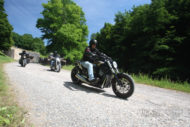
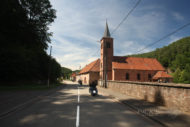
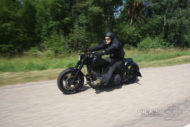
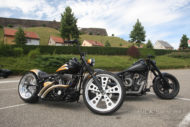
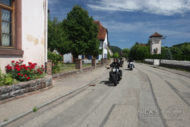
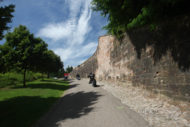
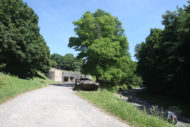
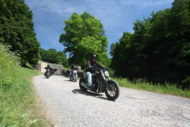
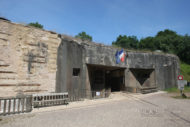
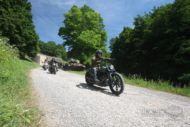
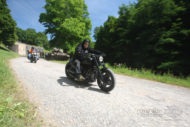
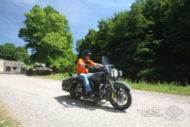
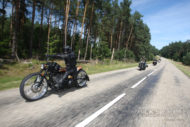
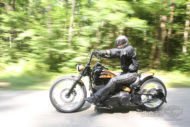
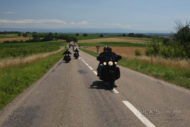
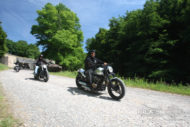
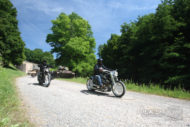
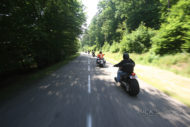
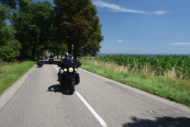
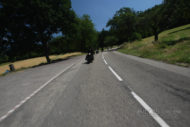
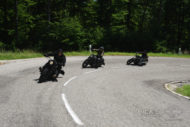
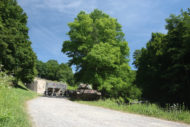
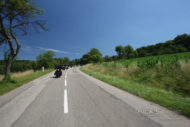
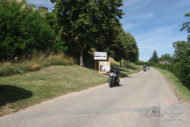
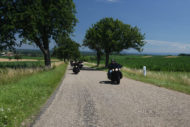
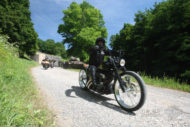
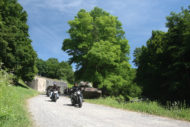
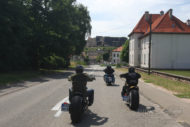
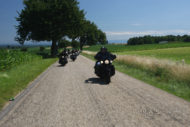
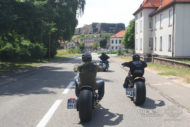
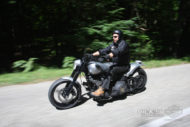
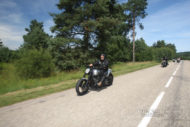
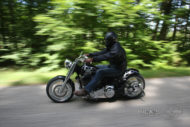
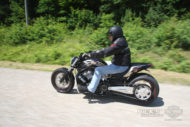
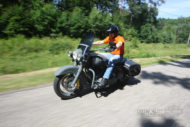
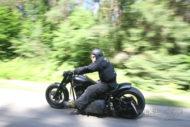
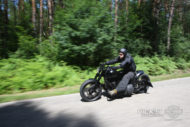
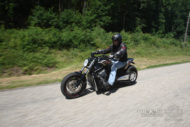
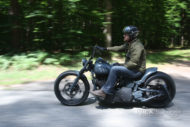
You should allow some time for this visit because there is a one-hour multi-media tour with monumental film scenes about the 1870/71 war and the caverns below the rock.
In those days the fortress, of which many parts are no longer there, was beleaguered by Bavarian troops from 8th August 1870 (http://de.wikipedia.org/wiki/Bayrische_Armee\o.
The commander Louis-Casimir Teyssier, whose story is described in the film documentation, only capitulated about a month after the “Truce of Versailles” on 25. March 1871 (http://de.wikipedia.org/wiki/Vorfrieden_von_Versailles\o, and then the Prussian army allowed the withdrawal of the French soldiers under arms.
Today’s visitors can learn about the whole history of the fortress with headphones and have a cup of coffee at the fortress hill if time allows. This weekend there is, however, a party with a big procession and bandwagons which wind their way from the parking lot downhill, so there is just enough time for another group photo with the impressive rock fortress in the background, and then Rick signals us to ride back. There was no time for photos of his Bagger this weekend, but the Alsace has so many roads and things to see that this won’t be the last “on the road with Rick’s” tour…
Nach der Mittagspause geht es wieder „on the Road“: Die nördlichen Vogesen gehen hier nahtlos in den Pfälzer Wald über – und die Straßen sind erfreulich leer. Bis Lembach führt die Straße durch Wälder und Täler. Hier und da erinnern Relikte aus Beton an glücklicherweise vergangene Zeiten. Hier im nördlichen Elsaß ist die Maginot-Linie am stärksten befestigt – eine Spätfolge der Schlachten von 1870/71. Nach dem Ersten Weltkrieg wurden Elsaß und Lothringen wieder an Frankreich abgetreten und der französische Minister André Maginot ließ bis 1936 eine gigantische Befestigungslinie vor allem unterirdisch anlegen. Heute sind vor allem im Elsaß zahlreiche Anlagen wie Schoenenburg, Simserhof und das Zwischenwerk „Four a Chaux“ auch für die Öffentlichkeit zugänglich und lohnen den Besuch. Teils mit eigenen unterirdischen Eisenbahn ausgestattet, erhält der Besucher Einblick in die riesigen Anlagen, die Kasernen, Munitionsdepots und Kampfstände mit versenkbaren Kanonenkuppeln umfassen. In der Landschaft sind oft nur flache Stahlkuppeln oder die Betonklötze der Bunker sichtbar. Teile der Festingskette werden noch heute von der französischen Armee genutzt, andere Werke dienen der Championzucht.
Nach einer kurzen Fotosession am Zwischenwerk „Four a Chaux“ – hier ist als Denkmal auch ein M 24 „Chaffee“ aus der Zeit der Befreiung durch US-Truppen abgestellt – geht die Tour weiter zum Zielpunkt der Reise: Bitche. Von Wissembourg nach Bitche geht es entlang der Grenze zur Pfalz und durch dunkle Wälder, die auch im Sommer Schatten spenden. Irgendwo überschreiten wir auch die heute unsichtbare Grenze zwischen Elsaß und Lothringen. Bricht man aus den dichten Tannenwäldern, blickt man direkt auf das beeindruckende Festungswerk: Auf einem Felsblock sitzt das vom französischen Festungsbaumeister Vauban entworfene Meisterstück. Dass diese Festung uneinnehmbar ist, glaubt jeder Besucher auf den ersten Blick!
